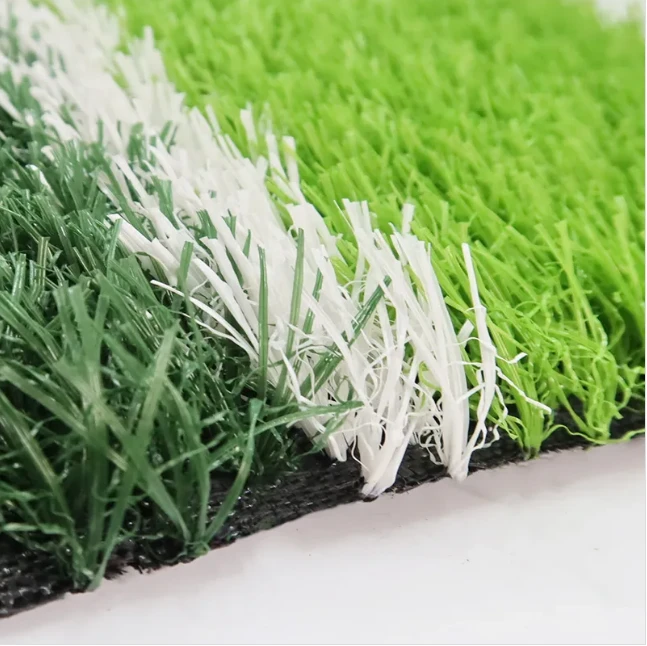
- Afrikaans
- Arabic
- Belarusian
- Bengali
- Czech
- Danish
- Dutch
- English
- Esperanto
- Estonian
- Finnish
- French
- German
- Greek
- Hindi
- Hungarian
- Icelandic
- Indonesian
- irish
- Italian
- Japanese
- kazakh
- Rwandese
- Korean
- Kyrgyz
- Lao
- Latin
- Latvian
- Malay
- Mongolian
- Myanmar
- Norwegian
- Persian
- Polish
- Portuguese
- Romanian
- Russian
- Serbian
- Spanish
- Swedish
- Tagalog
- Tajik
- Thai
- Turkish
- Turkmen
- Ukrainian
- Urdu
- Uighur
- Uzbek
- Vietnamese
fake grass for football
Dec . 03, 2024 17:44 Back to list
The Rise of Fake Grass for Football A Game-Changer in the Sport
In recent years, the use of artificial turf, commonly referred to as fake grass, has become a significant trend in the world of football. While natural grass has long been the traditional playing surface for this beloved sport, the advantages of synthetic turf are prompting clubs, schools, and amateur leagues to make the switch. This article explores the benefits and challenges of fake grass in football, along with its impact on the game and players.
The Advantages of Fake Grass
1. Durability and Consistency One of the most significant advantages of artificial turf is its durability. Unlike natural grass, which can become worn out due to frequent play, weather conditions, and heavy foot traffic, fake grass is constructed to withstand the rigors of regular use. This consistency ensures that players have a reliable playing surface, regardless of weather patterns or the time of year. As a result, teams can train and play without fearing that poor field conditions could jeopardize their performance.
2. Maintenance and Cost Efficiency Maintaining a natural grass pitch requires significant investment in terms of water, fertilizers, mowing, and regular upkeep. In contrast, fake grass significantly reduces these costs. Once installed, it requires minimal maintenance occasional brushing, infill replenishment, and cleaning. This cost efficiency is particularly appealing for clubs and schools operating on tight budgets, allowing them to allocate resources to other areas, such as coaching or equipment.
3. Playability in All Weather Synthetic turf excels in various weather conditions. Rain, snow, or extreme heat often leave natural grass fields muddy, slippery, and unsafe for play. However, artificial surfaces drain efficiently, allowing for excellent playability even after heavy rainfall. This reliability enables games and practices to continue uninterrupted, which is crucial for maintaining training schedules and competitive fixtures.
4. Injury Reduction Advancements in synthetic turf technology have led to the development of surfaces designed to reduce the risk of injuries. Modern fake grass is made with softer materials and better shock absorption than earlier versions. While there have been debates regarding injury rates between natural and artificial surfaces, many studies suggest that properly installed and maintained artificial fields can provide a safe playing environment.
Challenges of Fake Grass
fake grass for football

Despite its benefits, the use of fake grass is not without challenges and criticisms. One primary concern is the temperature of the surface. Artificial turf can heat up significantly in direct sunlight, leading to higher playing temperatures that could affect player performance and safety. Some players report discomfort during hot days, encouraging some leagues to limit play during peak sun hours.
Another challenge relates to environmental concerns. The manufacture and disposal of synthetic turf involve materials like plastics, which raise questions about sustainability. Moreover, some studies have expressed concerns about the use of crumb rubber infill, often made from recycled tires, as it can release microplastics into the environment. As awareness grows regarding environmental issues, many seek greener alternatives to traditional artificial turf without compromising performance.
The Future of Fake Grass in Football
As the technology behind artificial turf continues to evolve, the potential for further adoption in football is promising. New advancements may offer safer, more sustainable options that combine the best features of natural grass and fake grass. Innovations such as bio-based infills or environmentally friendly materials could pave the way for an eco-conscious approach to artificial playing surfaces.
Furthermore, with professional leagues and clubs increasingly investing in high-quality synthetic fields, the perceived stigma surrounding fake grass may diminish. This evolution will likely encourage more grassroots initiatives and investments in artificial turf, making top-tier facilities accessible to more players and communities.
Conclusion
The use of fake grass in football presents both significant advantages and notable challenges. While artificial turf provides durability, cost-efficiency, and reliable playability, its environmental impact and temperature concerns must be addressed. As technology advances and awareness grows, the future of fake grass in football looks set to change, making it a sustainable and practical option for players at all levels. The ongoing dialogue about its role in the beautiful game is essential as we strive for a balance between performance, safety, and environmental responsibility.
-
The Benefits of Artificial Turf for Indoors
NewsJul.15,2025
-
How Artificial Grass Suppliers Ensure Quality Products
NewsJul.15,2025
-
Artificial Grass and Pets: A Space for Relaxation
NewsJul.08,2025
-
Balcony & Outdoor Decoration with Artificial Grass
NewsJul.08,2025
-
Best Indoor Artificial Grass for Home
NewsJul.07,2025
-
Best Pet Turf for Dogs: Safe & Durable Artificial Grass Options
NewsJul.07,2025
Products categories









